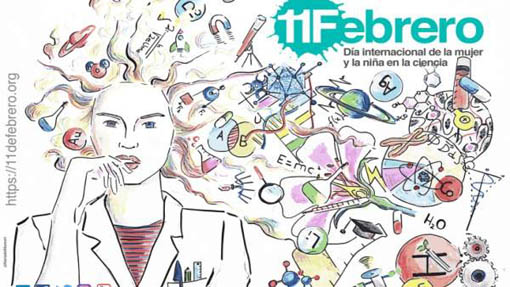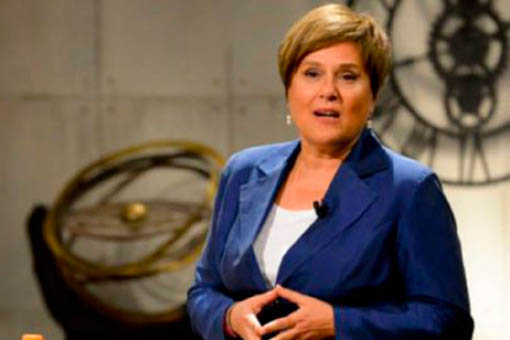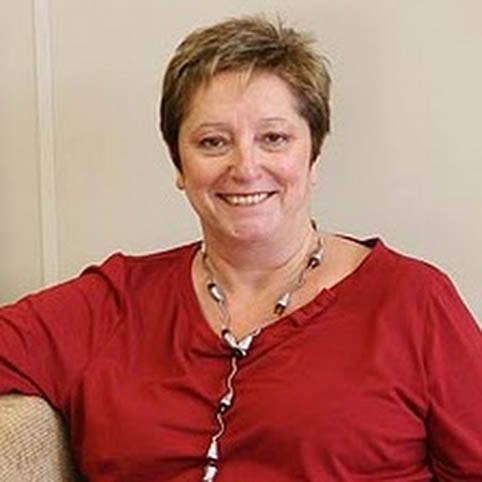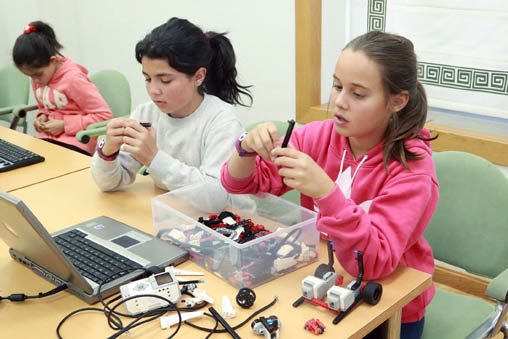Last Monday the International Day of women and girls before Science was celebrated.

Poster of the International Day of women and girls before Science
But what are the data on the participation of Spanish women in Science and how was that day celebrated?.
In Spain, 47.7% of scientific and engineering positions are held by women, according to the latest data, published by the European statistical agency (Eurostat), on the occasion of the International Day of Women and Girls in Science. In a sector traditionally dominated by men, such as science and engineering, this datum places our country above the average of the European Union, where women represent 41% of these positions, in this sector.
Despite this positive data regarding Europe, in Spain, of the almost 1.4 million engineers and scientists, 52.3% (729,000) are men compared to 47.7% of women (665,600).
At European level, of the almost 18 million people, who worked in this sector in 2017, 59% were men (10.5 million) and the rest were women (7.1 million). Only in five Member States, there was a majority of women engineers and scientists: Lithuania (57%), Bulgaria and Latvia (both 53%), Portugal (51%) and Denmark (slightly above 50%). However, less than a third of the engineers and scientists were women in Hungary and Luxembourg, (25%), Finland (29%) and Germany (33%).
Regarding the proportion of women, who dedicate themselves to research in Spain, they only represent 39%. A figure that has remained unchanged since the last 10 years. Thus, the Secretary of State for Universities and R + D + i, Ángeles Heras, has presented it during the presentation of the conclusions of the biennial report "Women Scientific in Figures 2017", according to the agency Servimedia.

Angeles Heras
The Secretary of State of Universities has also recognised that, in the research career, "gender influences". In the fifth edition of this study, these results "are far from being desirable for science, in Spain, and to consider that full equality has been achieved".
The "glass ceiling" is also present in our country, a phenomenon that means that few women can reach high positions in the scientific world. Heras has denounced that only 21% of the positions of professors of public universities are women and considers that this figure represents a "clear evidence of vertical segregation of gender". Therefore, the "greatest gender gap", in the universities, continues to be registered in the vice-chancellorships.
In the last four years, the rector women, in public universities, have gone from 2% to 8%. In the group of universities, the proportion has risen from 10 to 15%. Where there is a certain "balanced" presence of women, it is 48% of the Governing Councils and 48% of the faculty and school governments.
In the international area, the figures are not much better. According to UNESCO, 28% of the scientific researchers, in the world, are women. In terms of female students worldwide, the enrollment of female students, in information technology and telecommunications, is 3%; in natural sciences, mathematics and statistics they register 5%; and 8% decide to study engineering or studies related to the construction or manufacturing.
The stereotypes and the lack of historical reference of women scientists are behind the few feminine scientific vocations. Recently, a 2017 study, published in the journal “Science”, shows how gender stereotypes, in science, are acquired at an early age and have an effect on interests, since childhood. The results of this study conclude that, at five years, the youngest did not observe differences, but after six years, the probability that girls perceived a person of their sex as intelligent diminished.
As for the feminine scientific referents, only 17 women have won the Nobel Prizes in Chemistry, Physics, Physiology and Medicine, in front of the 599 men who have obtained it. A phenomenon denounced by CSIC research teacher in Science, Technology and Gender, Eulalia Perez Sedeño, who affirms that "there is a lack of presence of women in the histories of science, that not throughout History, because there have been many less than men, because they have agreed to education. Later, in the textbooks, references do not usually appear".

Eulalia Perez Sedeño
To solve this silence and this unequal distribution, between men and women, several initiatives have been launched this year. On the one hand, during this last week the CSIC has organised more than 200 activities, in their centers in different autonomous communities, between exhibitions, workshops and talks by researchers, in educational centers, not only on genetics or nanotechnologies, but also will explain to younger how they were motivated to become scientists.

Some girls in a science workshop
Other initiatives such as the blog "Mujeres con ciencia" (“Women with science”), also aim to disseminate, through the internet, the work of women who have dedicated or devote themselves to science.
Well, I believe that governments have to push more the work of women before Science.
Until my next post, kind regards,
Luis.
Sponsored by Costaluz Lawyers.
Please click below:
